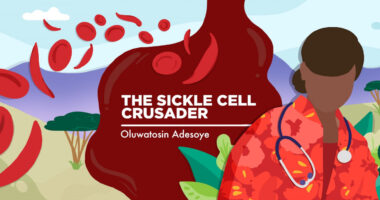Pandemic Leading to Fewer Hospital Stays, but More Severe Crises

Fewer adults and children with sickle cell disease (SCD) have sought medical care for disease-related events during the COVID-19 pandemic, resulting in lower hospitalization rates, but longer hospital stays, according to data collected from a specialty center in Southern California that cares for a large number of SCD patients.
“More sickle cell vaso-occlusive [pain] crisis were being managed at home, likely due to avoidance of COVID exposures at health care facilities, likely thus leading to certain individuals having more severe crisis,” the researchers wrote.
There also was a decrease in red blood cell transfusions and medications to control pain.
According to researchers, the focus now must be “better outpatient support” and “care optimization with sickle cell disease modifying agents.”
“Our hope is by healthcare professionals looking at this study, it will be helpful for other comprehensive programs in this region and beyond, not only for understanding the impact on sickle cell disease but for other life-threatening disorders and immunocompromised patients who are amid this pandemic,” Akshat Jain, MD, section head for pediatric hematology at Loma Linda University Children’s Hospital, in California, and the study’s first author, said in a university press release.
“I also strongly encourage patients in the sickle cell community to utilize existing tools, such as available vaccines, to combat negative COVID-19-related sickle cell crises,” Jain said.
Findings from the analysis were reported in the study, “Impact of COVID 19 Pandemic on Health Care Utilization for Patients with Sickle Cell Disease – a Specialty Treatment Center Experience,” published in the journal Blood.
People with SCD face many disease-related complications, including a shortage of red blood cells leading to anemia, chronic kidney disease, recurrent infections, and vaso-occlusive crises — severe episodes of acute pain in the back, chest, or extremities caused by sickled red blood cells blocking blood flow in small vessels.
SCD patients who regularly seek medical care have fewer emergency department visits and hospitalizations, a shorter length of stay if hospitalized, and a lower use of opioid pain medications than those who do not seek care.
The COVID-19 pandemic has affected healthcare worldwide, with many people trying not to seek medical care at hospitals or clinics out of fear of contracting the virus. Across the U.S., SCD patients have been significantly impacted by the pandemic.
“Sickle cell disease patients are 10 times more at risk of being hospitalized due to COVID-19 as compared to anyone else,” said Jain. “About 11% of those patients needed hospital ICU-level care because they became so sick from sickle cell-related COVID-19 complications, and about 7% of those patients died.”
However, how the pandemic has generally impacted healthcare utilization among SCD patients has not been fully addressed.
Jain and colleagues now investigated the pandemic’s influence on healthcare use by SCD patients living in the Inland Empire region of Southern California, which has a relatively high number of people with the blood disorder.
The team examined inpatient healthcare use for both adult and pediatric SCD patients at Loma Linda University Medical Center and Children’s Hospital. Data was collected on emergency department visits and hospitalizations, length of hospital stay, readmission rates, blood product use, and opioid treatments.
To compare the pre-pandemic phase to ongoing pandemic data, the study was divided into three time points: Pre-COVID, dating from September 2019 to February 2020; Intra COVID 1, running from March 2020 to September 2020); and Intra COVID 2, from October 2020 to February 2021.
“We knew the impact wasn’t going to end in 2020 or even by summer 2021,” Jain said. “By knowing these trends in healthcare utilization, we can prepare further for continued waves of COVID-19 and how it will affect our patients in the Inland Empire.”
The analysis revealed that fewer SCD patients sought medical care for acute SCD events, such as pain, acute chest syndrome, COVID-19, or pneumonia. That led to fewer emergency department visits and hospitalizations — but more extended hospital stays if admitted.
This trend was seen in both adult and pediatric patients during the Intra COVID 1 and Intra COVID 2 time points, “likely due to the fear of contracting COVID infection at an acute health care setting in a declared pandemic,” the team wrote.
Acute events, such as vaso-occlusive crises, were being managed at home, the data showed. In particular, adults reporting a more severe crisis experienced worse outcomes with lengthy hospital stays.
Generally, the need for transfusions to replenish red blood cells, or intravenous (into-the-vein) opioids to treat pain, decreased during the pandemic.
There was an overall decrease in inpatient healthcare use in the SCD population during the pandemic, “due to more people foregoing medical care,” the researchers wrote. This was especially apparent in ethnic minority populations who have limited access to healthcare.
Finally, compared with adult SCD patients with less access to healthcare globally, pediatric patients cared for by professionals at SCD specialty centers did better.
“Infrastructure around better outpatient support, care optimization with sickle cell disease modifying agents and timely access to inpatient care even in a pandemic, that is ongoing could be strategies to reduce stress on the health care systems and better utilization of scarce resources,” the investigators wrote.








